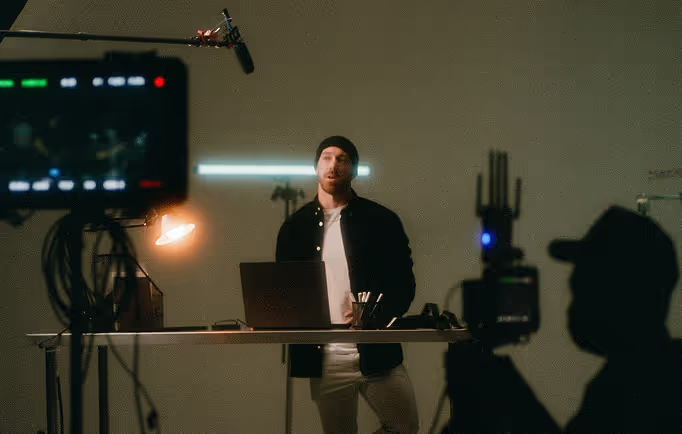The Art Of Being Transparent With Your Brand

Transparency in business is becoming quite the art form. In an oversaturated market customers want to support brands whose values they admire and whose word they can trust. This involves not just internal honesty, but constructing your marketing, social media, and video content to support a transparent relationship with your clients.
1) first, commit yourself to transparency
Five-season Amazon comedy-drama television series aside, what exactly does it mean to be transparent? Transparency in terms of business and branding mean associating yourself with values of honesty, trust, and useful disclosure. Now more than ever in the era that popularised the term ‘fake news’, consumers are looking for a sense of truthfulness from the companies to whom they give their money and time. It’s not enough anymore to adopt a “Products you can depend on!” slogan and call it a day – if you want your brand to be trusted for its integrity then transparency must be a core component of the company’s values, and integrated into each level of the business, both internal and external.
2) trust your customers’ understanding (and avoid “you can’t handle the truth” syndrome)
Sometimes organisations avoid transparency not out of intentional malice or deceit, but because they simply underestimate the audience’s ability to understand. This is a particularly easy trap to fall into for startups who are taking advantage of new technical fields. This underestimation problem can then swing in the opposite direction, whereby brands mistakenly use explainer videos to over-explain with precise technical jargon the ins-and-outs of exactly how their product works. But real transparency here is not at all about the ‘hows’ – it’s about being clear and honest on the ‘whys’. Why should you care about this brand? Why would this product make your life better? Do I truly believe in the thing I’m promoting?
3) people like talking to people, so talk like a person
When I think of transparency, I get a mental image of someone sitting down to have a one-on-one talk with me. We are both there to listen and to talk and, most importantly, to understand. When I think of the opposite of transparency, I think of a long legal contract. It’s comprehensive, upwards of fifty pages, and contains every clause for every eventuality you might think of – but underneath is all is a base layer of inaccessibility. Legal jargon, bureaucracy, and over complication act as hurdles for the consumer and defensive barricades for the corporation. What’s supposed to lay out the relationship between customer and seller becomes a clear marker that this is not a relationship based on understanding, it is an adversarial one.
So when we speak in everyday language in our branding, we put the focus on being understood by the audience. Not underestimating their intelligence by oversimplifying, but being fully transparent in our messaging. Good explainer videos aim to do just this – to clarify through short, simple, and understandable imagery. If your marketing copy sounds like a robotic script, it might be time to take a look at the real people you are talking to, get on their level, and have a real conversation.
4) be clear about how your audience can reach you
If you want to be transparent, you must be prepared for the consumer/business relationship to be a two-way communication street. It’s important that your audience feels comfortable and able to pose questions, concerns, and comments to and about your brand. In social media, this often means offering direct messaging opportunities with your brand, where followers can expect a real, non-robotic response. In explainer videos, it’s being clear about your call to action. How can someone watching this interact with you further?
5) …and make those lines of communication good
A common tactic on brand social media pages to generate more engagement is to ask open-ended questions to followers. “It’s National Donut Day! What’s your favourite donut?” (P.S. The correct answer is cinnamon and/or jam-filled).
Some brands have this strategy down, but others tend to throw the question out and then sit back, hoping the followers will make discussion amongst themselves. Or worse, when a follower posts a comment to the brand asking a question, and the only response is a copy and paste bot reply.
There’s little point in asking your audience engaging questions on public platforms if you aren’t going to… well… engage. Same goes for providing phone numbers, email addresses and website links on your explainer video. Transparency doesn’t come across as a key concern when your phone is frequently unmanned, your email link is broken, and your website provides no further means of connecting with your brand.
6) empower your audience with knowledge to improve user experience
Surprisingly, a great example of transparency being used to improve user experience can be found in the humble traffic light pedestrian crossing. Basic lights offer users the minimum amount of information – Solid red man or hand: You cannot cross the street. Walking man: You can cross the street. Flashing red man or hand: Hurry! You have an indeterminate amount of time to finish crossing! Is it thirty seconds? Is it one second? Who knows! Life is an ever-changing enigma!
Somewhere along the way, safety researchers realised that arming pedestrians with more knowledge (and therefore more autonomy to make correct decisions) would increase both driver and pedestrian safety. The change is small but very effective – electronically controlled countdowns show the amount of time left before crossing, giving pedestrians a clear time frame to complete the crossing, or to choose not to cross at all. (https://www.hindawi.com/journals/jat/2017/8391325/)
In applying this theory to your brand videos, consider what would help give the audience a sense of knowledge and self-empowerment. Perhaps it’s offering more transparency in the ways your product can be utilised, or offering links to free software to empower users to learn your product for themselves, or even educating your audience on some of your brand’s core values through, you guessed it, a short and impactful explainer video.
Start a






